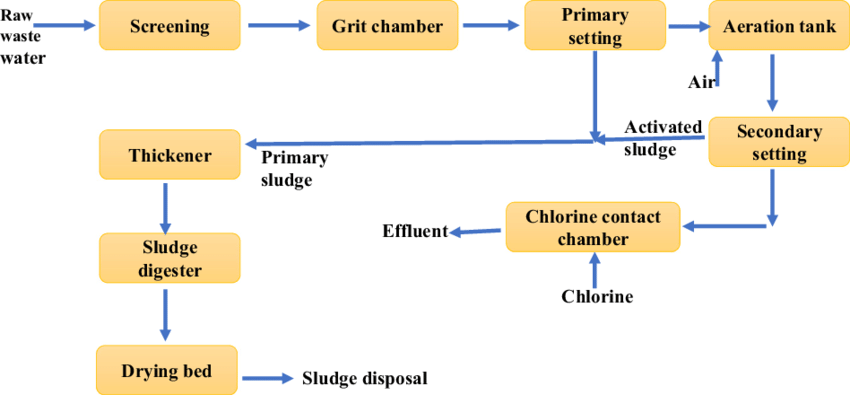Things about Reclaim Waste
Table of ContentsSome Known Factual Statements About Reclaim Waste What Does Reclaim Waste Do?Some Known Details About Reclaim Waste Indicators on Reclaim Waste You Should KnowThe Only Guide to Reclaim Waste
Explore the kinds, events, and types of liquid waste. Residential sewer waste refers to the waste and items from a household sewage-disposal tank. This sort of waste is developed by people in houses, colleges, and various other structures. This only includes septic tanks that have a drain field. The correct administration and disposal of domestic sewer waste require fluid waste to be transferred to a sewer treatment plant where the appropriate techniques and devices are put on cleanse and take care of waste.
Industrial waste frequently consists of possible threats, such as flammable materials or a combination of liquid and solid waste items, and calls for an advanced and detailed disposal procedure. The disposal of industrial waste commonly involves the filtration of waste prior to transport to guarantee safe and appropriate disposal. Hazardous waste is produced from byproducts and runoff of industrial processes and production.
This kind of waste can not utilize the very same sewer management transportation or procedures as septic or commercial fluids. The industrial waste administration procedure calls for the evaluation and testing of fluid waste prior to it undergoes the disposal procedure (liquid waste removal). Drainage waste is the fluid waste that comes from overflow and excess stormwater in very booming areas or cities
Drainage waste can create contamination and flooding if not taken care of effectively. Making certain appropriate waste management can avoid catastrophes and lower environmental harm.
Examine This Report on Reclaim Waste
Call PROS Providers today to discover our waste monitoring and disposal services and the correct ways to care for the liquid waste you generate.
(https://writeablog.net/reclaimwaste1/reclaiming-resources-a-comprehensive-guide-to-industrial-wastewater-treatment)This so-called 'wastewater' is not only an important resource yet, after therapy, will be launched to our land, waterways or the sea. Utilized water from commodes, showers, bathrooms, kitchen area sinks, laundries and commercial procedures is known as wastewater.

water utilized to cool down machinery or clean plant and tools). Stormwater, a kind of wastewater, is runoff that streams from farming and urban locations such as roofs, parks, gardens, roadways, courses and rain gutters right into stormwater drains, after rain. Stormwater flows unattended directly to regional creeks or rivers, at some point getting to the ocean.
Getting The Reclaim Waste To Work
In Queensland, a lot of wastewater is straight from the source dealt with at sewer therapy plants. Wastewater is transported from domestic or industrial sites via a system of sewage systems and pump terminals, understood as sewage reticulation, to a sewage treatment plant.
The Division of Natural Resources suggests regional federal governments regarding managing, operating and maintaining sewerage systems and therapy plants. In unsewered locations, city governments might call for homeowners to mount specific or family sewage treatment systems to treat residential wastewater from commodes, kitchens, bathrooms and laundries. The Division of Natural Resources authorises the use of family systems when they are shown to be reliable.
The majority of stormwater obtains no treatment. In some new neighborhoods, therapy of some stormwater to eliminate trash, sand and crushed rock has started making use of gross contaminant traps. Wastewater therapy happens in four stages: Removes strong matter. Bigger solids, such as plastics and various other items mistakenly discharged to drains, are gotten rid of when wastewater is passed with displays.
Wastewater then flows into big tanks where solids clear up and are removed as sludge. Grease and residue are skimmed from the surface area. Utilizes little living organisms called micro-organisms to damage down and remove staying liquified wastes and great fragments. Micro-organisms and wastes are incorporated in the sludge. Eliminates nitrogen and phosphorus nutrients that can create algal flowers in our waterways and intimidate marine life.
How Reclaim Waste can Save You Time, Stress, and Money.
Nutrient elimination is not available in any way sewer treatment plants because it needs costly specialist devices. It is coming to be extra common in Queensland. Clear fluid effluent generated after therapy might still contain disease-causing micro-organisms. If this effluent is released into rivers such as rivers or the sea, the micro-organisms will ultimately die out.

A lot of wastewater flows right into the sewerage system. Under the Act, regional governments provide approvals and permits for ecologically relevant activities (Periods) entailing wastewater launches that might have a neighborhood effect.
Reclaim Waste for Dummies
Tracking provides factual details regarding water top quality and can confirm that licence conditions are being fulfilled. The details obtained through tracking provides the basis for making water high quality choices.